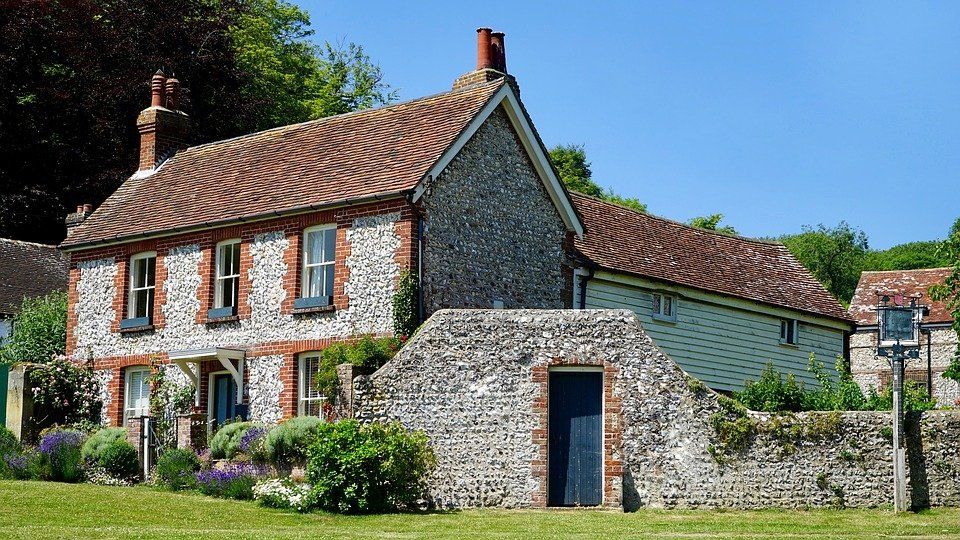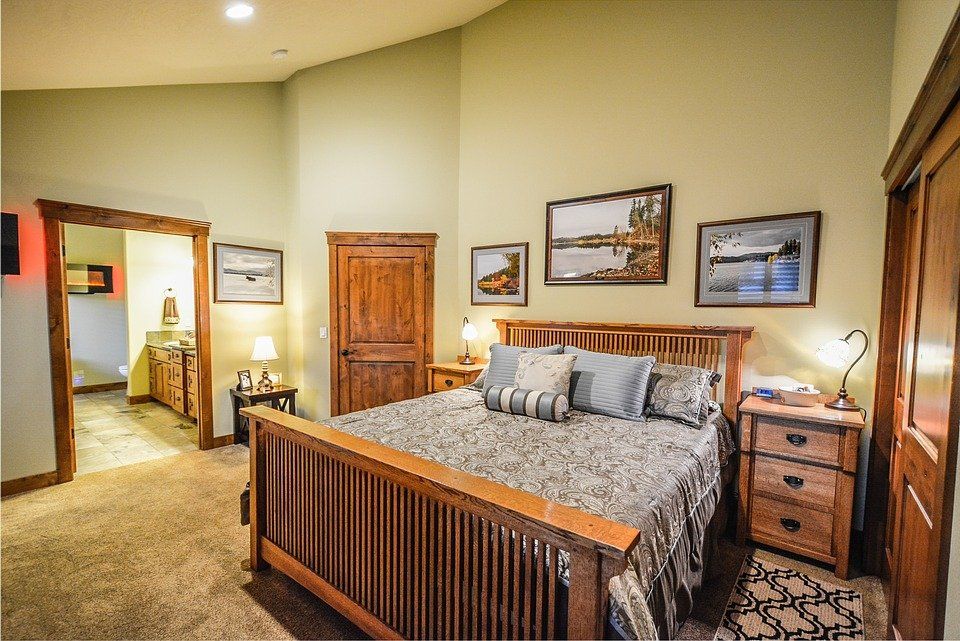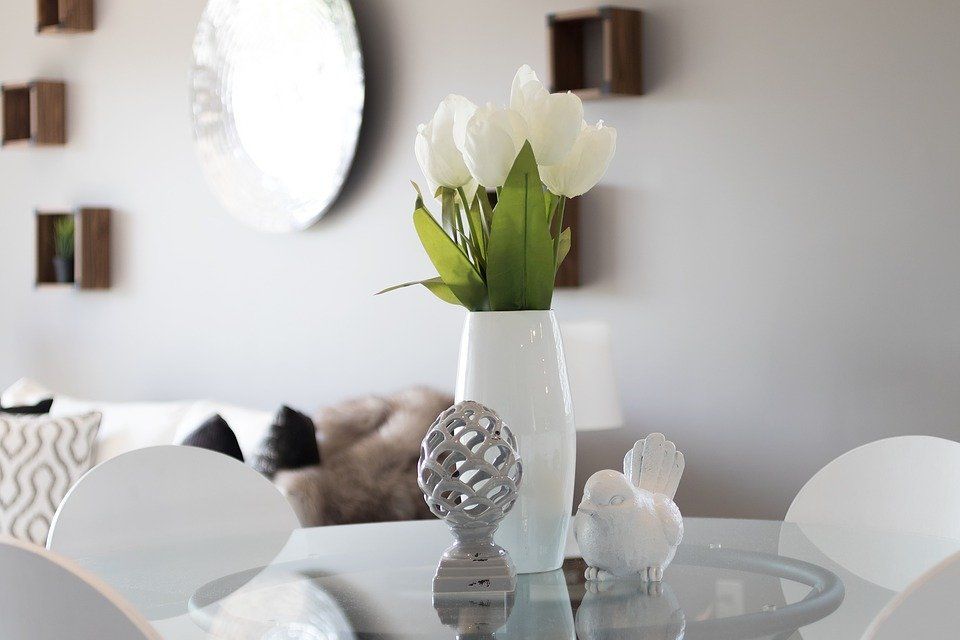
Preparing Your Home for Sale
People often buy a home based on their feeling about it. If you're intending to sell your home, it's important to keep this in mind: Regardless of your location and price. If something about your home "feels" wrong, buyers will look elsewhere. Get the competitive edge by making sure all areas of your home are shipshape before putting it on the market.
- Keep your lawn well-trimmed and edged. Trim shrubs. Remove all dead limbs and debris.
- Plant some extra flowers for color or just put pots of flowers beside the front door.
- Put away lawn equipment. Arrange outdoor items, such as firewood or out door furniture neatly.
- Check surfaces such as siding, windows sashes, trim, and shutters. Touch up with paint or clean.
- Make sure the entry light and doorbell work. Paint, stain, or clean the door if needed.
- Clean out debris in gutters. Touch up with paint if needed: realign if crooked.
- Fix broken windows and screens. Wash them.
- Arrange the furniture and discard unused items so each room appears as spacious as possible.
- Consider it Spring and do your "Spring cleaning" - make sure all surfaces are clean and neat - this includes closets, attics, basements and garages.
- Buy higher-intensity light bulbs and put them in every lamp in the house. They'll make the rooms seem warmer and brighter.
- Brighten things with fresh paint. It costs very little and white, off-white, or beige walls make a room look bigger and lighter. They're also more likely to go with the new buyer's furnishings.
- Clean the oven and all appliances. Polish the chrome on the sink. Polish the chrome on tub, toilet, and bathroom sink.
- Launder draperies and curtains if needed.
- Shampoo carpets and wax floors. Consider replacing your carpet if it really looks worn. You may not recover all the costs, but your home should sell faster.
- Get out your tool kit: Tighten loose doorknobs, pulls on drawers and cabinets, towel racks, switch plates, and outlet covers. Fix sticking or squeaky doors and windows, loose stair banisters, and the like. Repair and clean caulking around tubs and sinks. Fix leaky faucets; remove water stains.
Pricing Your Home
Our Home Market Analysis will show what is happening in the local real estate market right now - and what buyers are willing to pay for homes similar to yours, what they won't pay and which homes will be competing with yours for buyers' attention.
While we want to establish the highest possible market value for your home, it is critical not to underprice it. Because that would be like giving hundreds of dollars to a total stranger. It is also critical not to overprice your property. Overpricing:
- makes competing homes look like better values
- reduces agent and buyer interest
- can lead to mortgage rejections once the appraisal is in
Some sellers want to price high so they'll have "a cushion for negotiation". However, savvy home sellers realize that overpricing will turn buyers away - and leave no one to negotiate with!
"Inline" Strategy: online alliance that propels buyers to your home's listing
We have created a collection of web connections - local, regional and international - that get a direct feed of our listnings onto hot real estate sites as quickly as possible. This exposure is incomparable in the industry and produces enormous exposure for yuor property. We constantly monitor the collection's "deliverability."
Sites include:
realtor.com
trulia.com
zillow.com
homes.com
homefinder.com
hotpads.com
homewinks.com
homesandland.com
trulia.com
zillow.com
homes.com
homefinder.com
hotpads.com
homewinks.com
homesandland.com
Specialty Websites include:
mcall.com
lakehomesUSA.com
landwatch.com
realtytrac.com
luxuryrealestate.com
relocation.com
Home Improvements
What home improvements really pay off when the time comes to sell your house?
That’s an important question for any homeowner contemplating moving or remodeling. And the only possible answer is a somewhat complicated one.
That answer starts with the fact that really major improvements – room additions, total replacements of kitchens and baths, etc. - rarely pay off fully in the near term. It ends with the fact that small and relatively inexpensive changes can pay off in a big way in making your home attractive to buyers if your decision is to move now.
It’s often the case that the most appropriate major improvements are unlikely to return their full cost if a house is sold within two or three years.
Does that mean that major home improvements are always a bad idea? Absolutely not. It does mean, though, that if your present house falls seriously short of meeting your family’s needs you need to think twice – and think carefully – before deciding to undertake a major renovation. Viewed strictly in investment terms, major improvements rarely make as much sense as selling your present home and buying one that’s carefully selected to provide you with what you want.
Even if you have a special and strong attachment to the house you’re in and feel certain that you could be happy in it for a long time if only it had more bedrooms and baths, for example, there are a few basic rules that you ought to keep in mind.
Probably the most basic rule of all, in this regard, is the one that says you should never – unless you absolutely don’t care at all about eventual resale value – improve a house to the point where its desired sales price would be more than 20 percent higher than the most expensive of the other houses in the immediate neighborhood.
Try to raise the value of your house too high, that is, and surrounding properties will pull it down.
Here are some other rules worth remembering:
- Never rearrange the interior of your house in a way that reduces the total number of bedrooms to less than 3.
- Never add a third bathroom to a two-bath house unless you don’t care about ever recouping your investment.
- Swimming pools rarely return what you spend to install them. Ditto for sun rooms – and finished basements.
If you decide to do what’s usually the smart thing and move rather than improve, it’s often the smaller, relatively inexpensive improvements that turn out to be most worth doing.
The cost of replacing a discolored toilet bowl, making sure all the windows work or getting rid of dead trees and shrubs is trivial compared with adding a bathroom, but such things can have a big and very positive impact on prospective buyers. A good broker can help you decide which expenditures make sense and which don’t, and can save you a lot of money in the process.
Remodeling your Home
The classic way for homeowners to increase the value of their house is by remodeling existing rooms or adding on to its current plan.
Some choose to build recreation rooms and studies while others add new appliances, fixtures and cabinets to enliven rooms and make their home more attractive to future buyers.
But, when should you decide to stop sinking money into a home and buy a bigger place? And how much rehab is too much when it comes time to recovering remodeling costs through a home sale?
For instance, if you've just spent $1,000 remodeling your living room and didn't expand your small bathroom, the chances of increasing the number of interested buyers are slim.
With these concerns in mind, I can offer a few tips for those struggling to add value to their home.
First, always protect the character of your home. Nothing sticks out more than a new addition that is in a completely different architectural style. Be consistent. Recognize your home's character and stay within its framework.
The most financially rewarding areas to remodel are usually the kitchen and bath. Newly re-done cooking spaces and cabinets can attract more buyers and may command a slightly higher price for the home than a comparable one on the market. Simple repairs that are made to last will bring you the biggest returns upon sale.
Enlarged bathrooms are the most popular attraction for new homebuyers, according to the National Kitchen and Bath Association. Today, the most popular additions for younger buyers are sunken whirlpool baths and showers. But be sure to install modest, solid amenities. It's easy to quickly over-spend on bathroom fixtures.
Buyers are, by convention, more interested in aboveground living space – not basements, yards and walkways. Swimming pools can be a poor investment if installed for the sole purpose of increasing a home's value; it's rare that a pool's cost will be recovered in a home sale. It can also be a negative feature for potential buyers with very young children.
Replacing worn carpeting, tiles and wood floors can give your home an immediate advantage over similar properties in the area. Updating paint colors in all areas of your home can also prove beneficial.
However, it's recommended that you use neutral colors, such as gray, beige and off-white when adding new floor and wall coverings. Fewer buyers will then turn away because of differing tastes.
Stay simple with your remodeling and look at your home as though you were the buyer. Chances are that if you find the upstairs bedroom could be brightened by a larger window, potential buyers will probably feel the same.
Don't go overboard. Concentrate on improving two or three deficiencies in your home. More than likely, the time and money you spend adding quality to your home will be rewarded with greater profit at selling time.
Who Pays for What?
A major question in every escrow is: "Who pays for what?" The answers vary by county ordinances and standard practices. What is listed below are “customary” practices. All fees charged are governed by terms of the sales contract and other written escrow instructions. Note: on some FHA, VA or other government-backed loans, the buyer will pay some fees that governmental regulations will not allow you to pay.
Seller's Generally Pay:
- Real estate commission
- Document transfer tax ($1.10 per $1,000 of sales price)
- Notary fees
- Property tax proration (to date of acquisition)
- Special delivery/courier fees, if required
- Document preparation fees
- Document recording charges
- Homeowner’s association statement fee and prorata dues
- Home warranty (according to contract)
- Work/repairs required (according to contract)
- Matters of record against the property or seller (loans, tax liens, judgments, etc.) and fees required to clear them (statement fees, reconveyance/trustee fees and prepayment penalties)
- Bonds and assessments (according to contract)
Buyer's Generally Pay:
- Title insurance policy premiums (lender’s and buyer's)
- Escrow fees
- Notary fees
- Property tax proration (from acquisition date)
- Special delivery/courier fees, if required
- Document preparation fees
- Document recording charges
- Homeowner’s association transfer fee and prorata dues
- City costs
- Home warranty (according to contract)
- Inspection fees (according to contract)
- Matters of record against the buyer including tax liens, judgments and fees required to clear them
- Fire insurance premium for the first year
- Assumption/change of records fees if the buyer is taking over an existing loan
- Lender’s new loan charges
- Interest on new loan from date of funding to 30 days prior to the first payment
- Other prorations (rents, insurance etc.) if applicable
Showing Checklist
Fully preparing your home for sale can make considerable difference in the time it takes to sell it. You can help eliminate buyer objections before they arise by making necessary repairs and improvements, some of which are suggested below.
Outdoors
__ Spruce up gardens and lawn; trim shrubbery and replace dead plants.
__ Yard and patio should be neat; outdoor furniture should be clean and in good shape.
__ Clean or paint your front door - remember first impressions last longest!
__ Manicure your front yard, driveway and entry - you can’t sell what you can’t see.
Exterior
__ Check that door numbers, mailbox, and exterior lighting are all in good repair.
__ Touch up with fresh paint as needed.
__ Inspect chimney for cracks or earthquake damage.
__ Repair loose trim, drainpipes and fencing.
__ Clean stains; clean window screens.
Garage
__ Remove clutter; tidy up shelves.
__ Wash floor so it looks clean and spacious.
Living Areas
__ Apply fresh paint as needed…brighten your interiors with neutral-toned paint.
__ Clean draperies and carpets.
__ Replace burned out light bulbs.
__ Clean fireplace, remove smoke stains from wall and mantle.
Kitchen
__ Sinks, appliances and counter tops should sparkle without any clutter.
__ Wax the floor.
__ Clean oven, range and other appliances.
__ Clean tile and grout; replace if necessary.
Bathrooms
__ Clean mirrors, glass, chrome and porcelain surfaces.
__ Replace shower curtain if necessary.
__ Fix any faucet drips or leaks.
__ Clean tile, grout and caulking; replace if necessary.
Closets
__ Doors and drawers should open and close easily.
__ Remove clutter; tidy up shelves and racks.
__ Shoes and clothes should be neatly arranged.
Overall
__ Check the basics around the house. It takes just a minute to check all doors, windows and cabinets to make sure they don’t stick, squeak or are too loose.
__ Clean your furnace & water heater, so buyers know they are looking at a house that has been well maintained.
Selling Your Home in Winter
In many parts of the country, selling a home during the winter months can be a challenge. Dreary, cold weather and the end-of-the-year holidays can keep buyers away and heighten fears of your home staying on the market longer than expected.
However, there are a few things you can do to enhance “curb appeal.” And when that happens, buyers will take notice.
For example, if your home has been on the market for several months, it's probably time to change our sales approach. There are several factors that we can review to determine improvements that can be made. We may need to make a reassessment of the sales price, as it may be too high for the current market or, instead, we may opt to create a new or updated marketing plan for your home. Marketing your home goes beyond a few ads in the newspaper and a listing on the Multiple Listing Service (MLS). Ask me about all the ways in which I will market your home.
When setting the asking price through a comparative marketing analysis, compare similar homes sold in the winter months. Many owners set their asking price too high because of comparisons with sales prices during peak seasons. Always try to compare like properties sold at the same time of year.
Once you’ve settled on an asking price, it's time to spruce up the interior and exterior of your home. I recommend opening as many curtains as possible to add light and color to rooms. Also, your might try keeping spring and summer pictures of your home out on tables and in clear view. Photos of your front yard flowers or the backyard shade tree in full summer bloom can help swing many buyers in favor of a purchase.
Staying on top of winter maintenance and chores is another sure-fire way of adding value to your home. A neatly shoveled driveway and cleared walkway can add a nice touch. Make sure the furnace is in good working condition and that the room temperature is kept at a comfortable level. Also, check to see that the basement (if there is a basement) is dry and sealed from any drafts.
Take yourself on a tour of your home. Start on one end and work your way through the house. More than likely you’ll see many previously undiscovered cluttered spaces and needed repairs that might turn off potential buyers.
Don’t overload your home with holiday decorations, either. The buyer should have a chance to see you home in its everyday condition.





